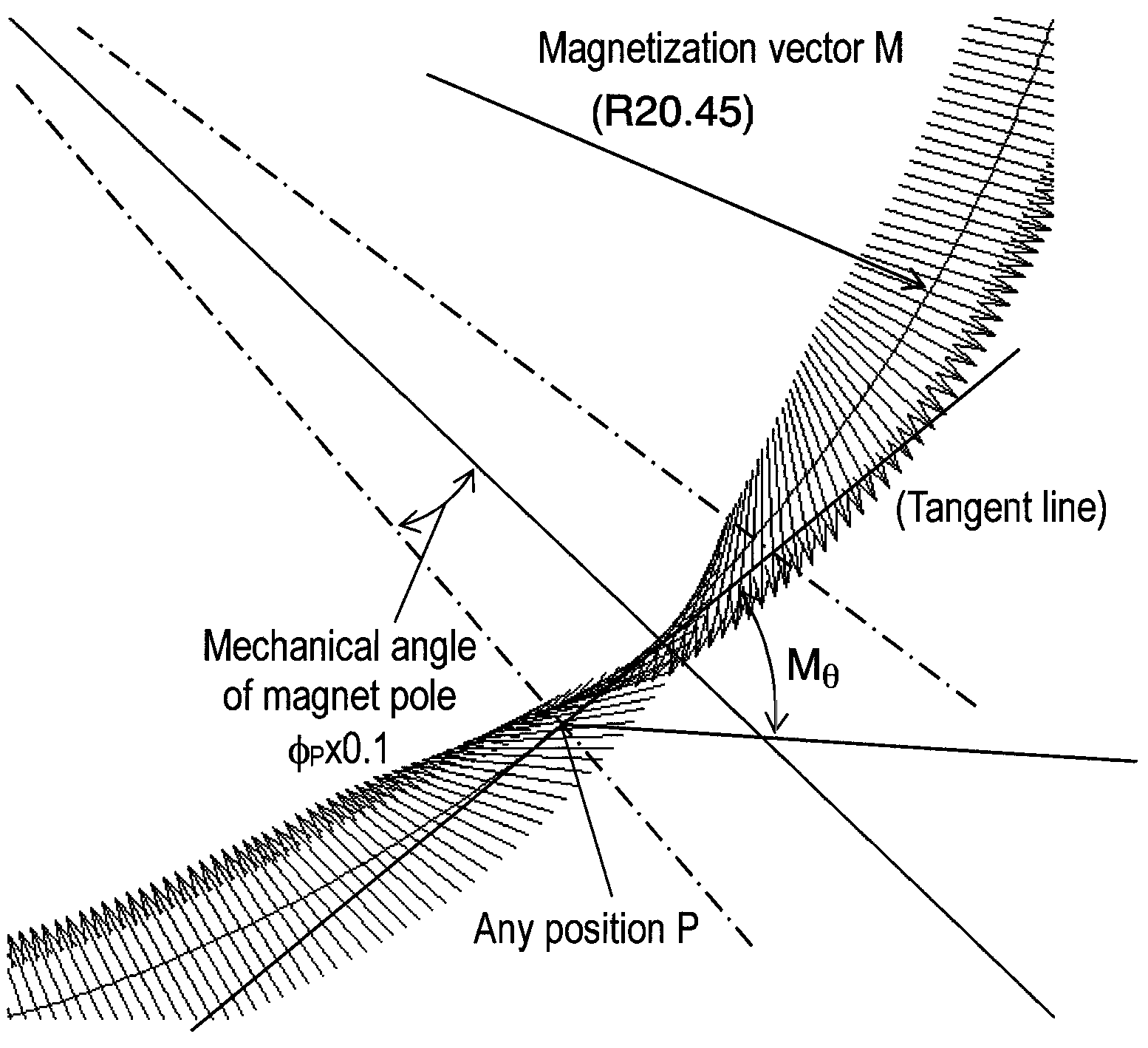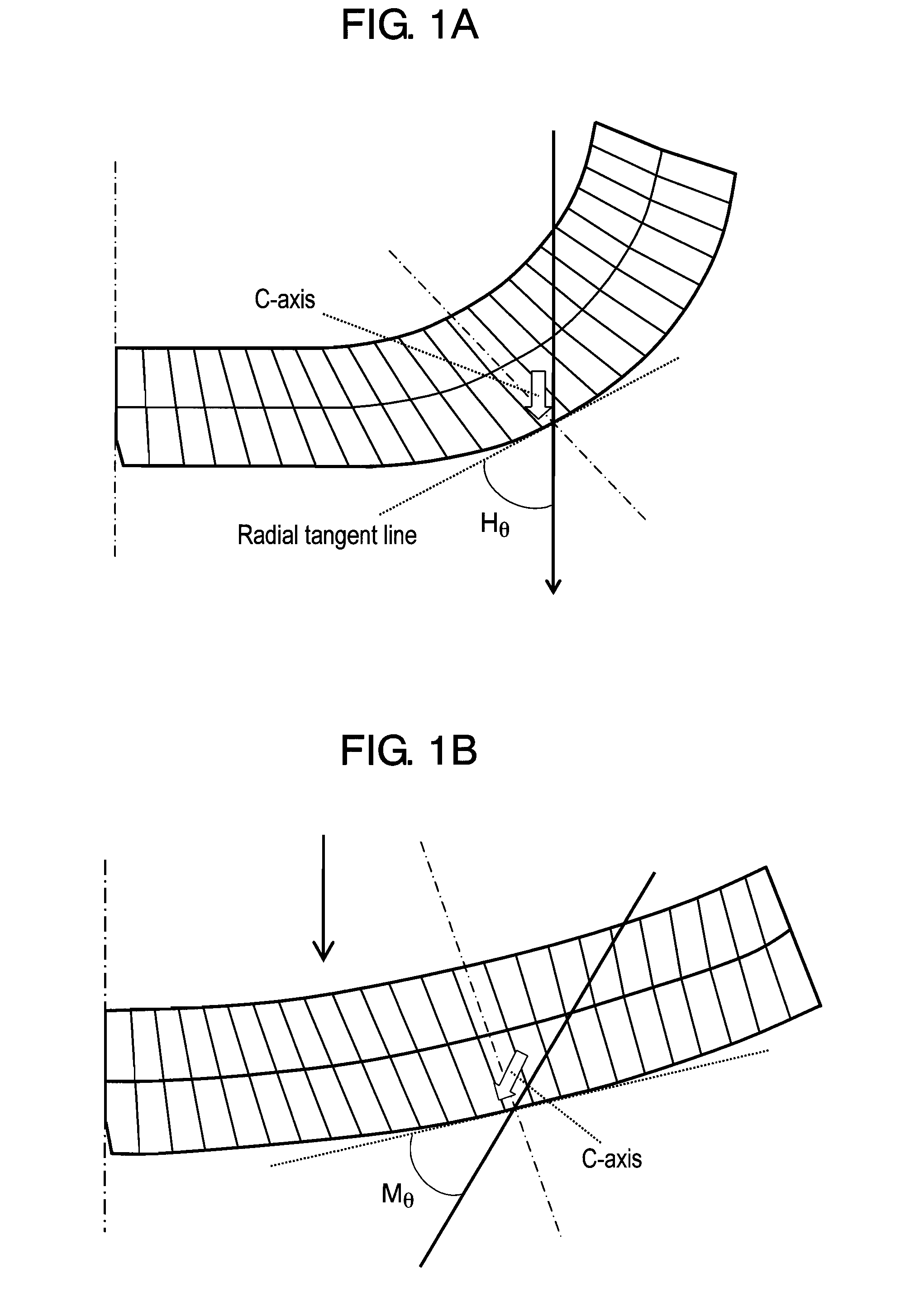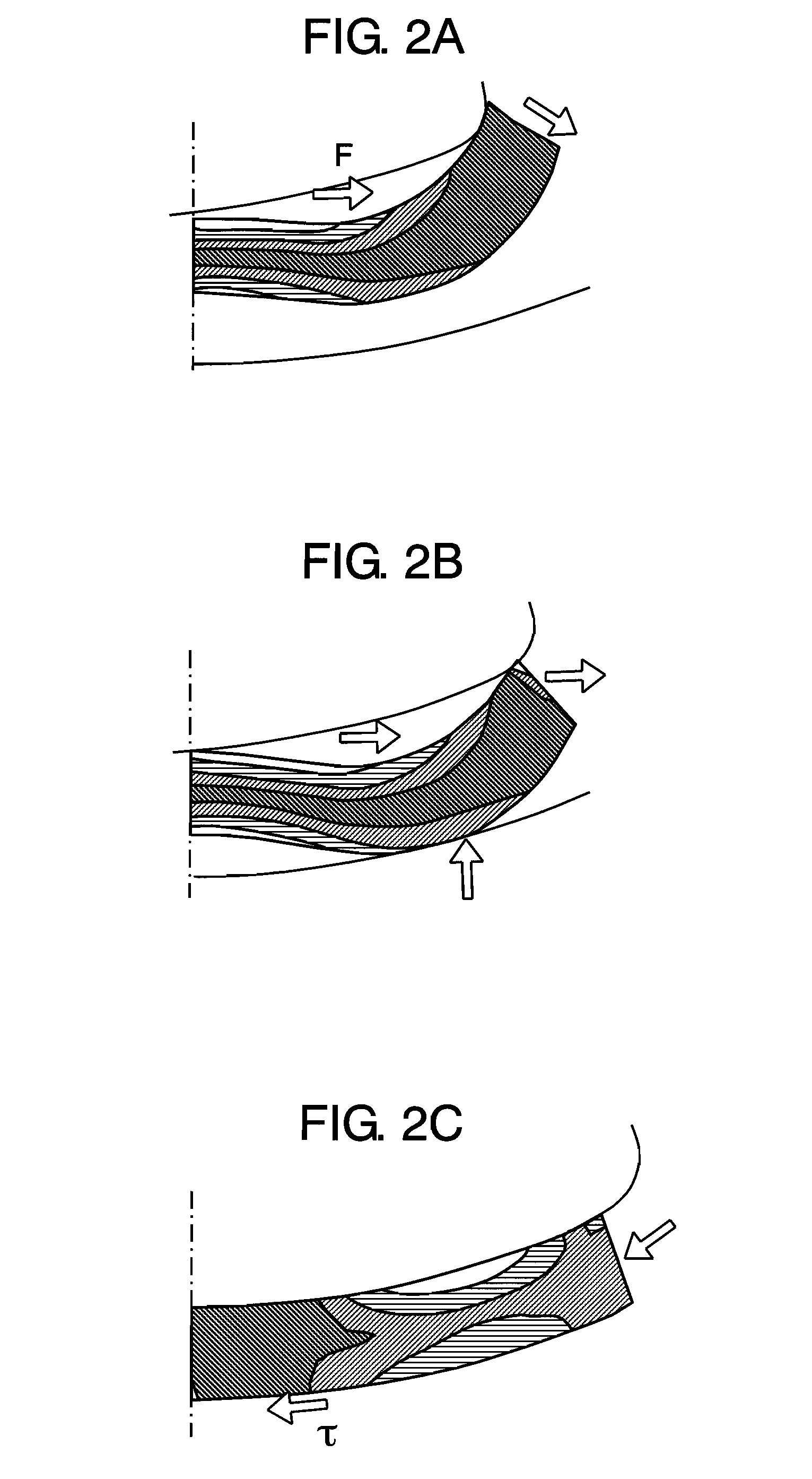Permanent magnet rotator and motor using the same
a permanent magnet rotator and permanent magnet technology, applied in the direction of magnetic circuit rotating parts, magnetic body, magnetic circuit shape/form/construction, etc., can solve the problems of increasing the vibration and noise of the motor, not necessarily giving high performance to the magnet, and increasing the power consumption of the motor, so as to reduce the power consumption and save resources
- Summary
- Abstract
- Description
- Claims
- Application Information
AI Technical Summary
Benefits of technology
Problems solved by technology
Method used
Image
Examples
embodiment
[0088]Hereinafter, according to an embodiment of the present invention, magnetic poles having continuously-controlled anisotropy, an 8-pole permanent magnet rotator, and a 8-pole / 12-slot permanent magnet type motor will be described in more detail. However, the present invention is not limited to this embodiment.
[0089]In this embodiment, material composition of a magnet includes anisotropic Sm2Fe17N3-based rare-earth magnet powders of 32.1 vol. % having energy density (BH) max=290 kJ / m3 and particle diameter of 3 to 5 μm, anisotropic Nd2Fe14B-based rare-earth magnet particles of 48.9 vol. % having energy density (BH) max=270 kJ / m3 and particle diameter of 38 to 150 μm, novolak epoxy oligomer of 6.2 vol. %, linear polyamide of 9.1 vol. %, 2-phenyl-4,5-dihydroxymethylimidazole of 1.8 vol. %, and a lubricant (pentaerytritol stearic acid triester) of 1.9 vol. %.
[0090]First, as shown in FIG. 5, magnetic pole 51 before modified with 50 MPa of a uniform oriented magnetic field Hex of 1.4 M...
PUM
 Login to View More
Login to View More Abstract
Description
Claims
Application Information
 Login to View More
Login to View More - R&D
- Intellectual Property
- Life Sciences
- Materials
- Tech Scout
- Unparalleled Data Quality
- Higher Quality Content
- 60% Fewer Hallucinations
Browse by: Latest US Patents, China's latest patents, Technical Efficacy Thesaurus, Application Domain, Technology Topic, Popular Technical Reports.
© 2025 PatSnap. All rights reserved.Legal|Privacy policy|Modern Slavery Act Transparency Statement|Sitemap|About US| Contact US: help@patsnap.com



